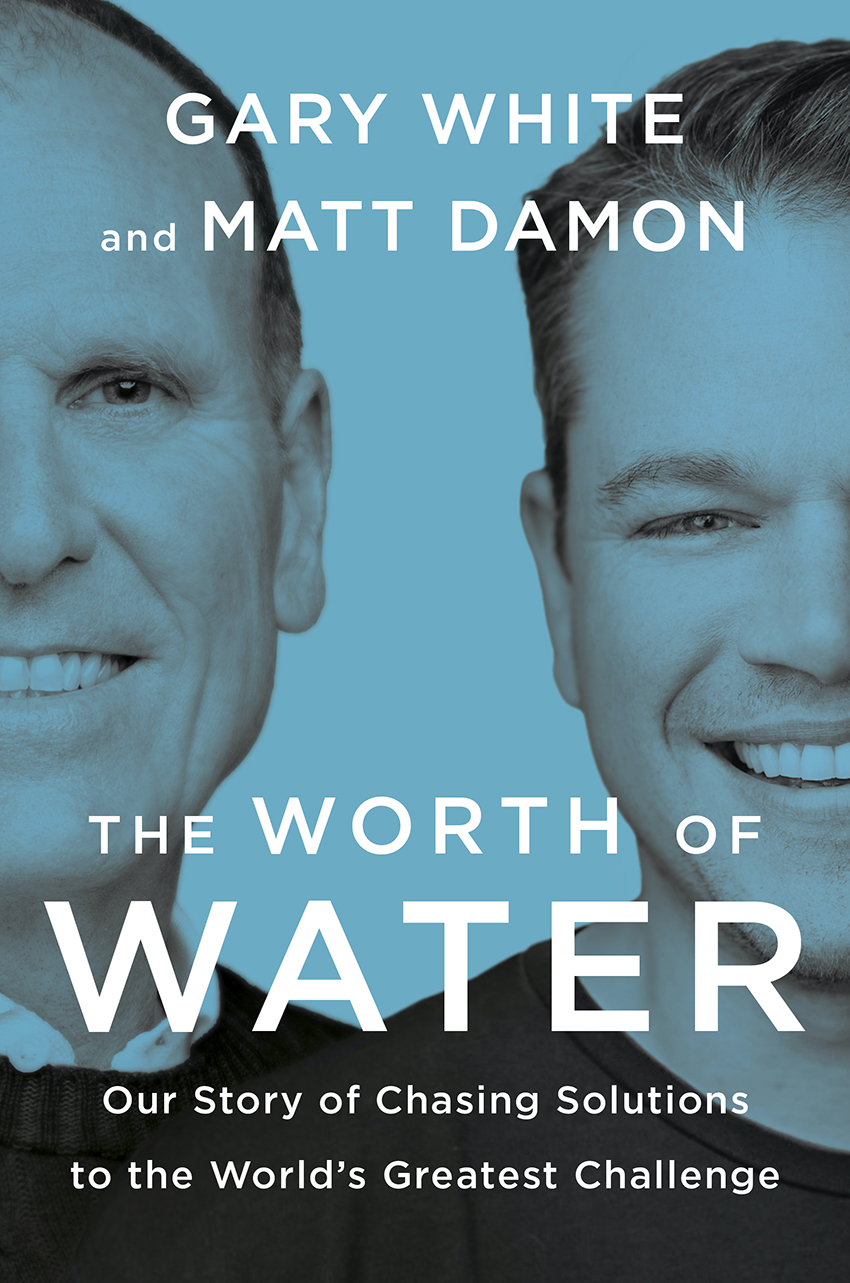By Ray Bert
The Worth of Water: Our Story of Chasing Solutions to the World’s Greatest Challenge, by Gary White and Matt Damon. Westminster, England: Portfolio/Penguin, 2022; 240 pages, $27.
There are no shortages of problems in the world that revolve, one way or another, around water. Rapidly melting ice caps and glaciers. Floods. Droughts. But when it comes to the “world’s greatest challenge” noted in the subtitle of The Worth of Water, the reference is to another problem altogether, one that most people in the developed world are fortunate not to share: lack of ready access to enough clean water and sanitation simply to survive and fulfill basic human needs.
Estimates show that 1 in 10 people globally — nearly 800 million — do not have access to safe water. Water to drink, to cook with, to bathe with — the true basics. This causes not just inconvenience and exacerbated poverty but sickness and death on a dramatic scale and even keeps women — who disproportionately shoulder the burden of fetching it, often over long distances — out of school in frighteningly large numbers. (Additionally, some 1.7 billion have no access to toilets.)
The Worth of Water is a joint work by engineer and international water and sanitation expert Gary White, who founded WaterPartners International in 1990, and actor and activist Matt Damon, who founded the H2O Africa Foundation in 2006. The book documents their challenges to bring clean water and sanitation to communities around the globe, includes stories of the people who face these challenges, and details an ambitious effort to provide a solution.
Damon and White met by chance in 2008 and merged their organizations to create Water.org in 2009. The organization’s central strategy revolved around a realization that White had come to years before: Millions were spending 20% of their income on water alone, often at usurious rates. The solution the pair have landed on is that providing relatively small loans — rather than outright charity — to improve water and sanitation access was an effective and organizationally sustainable model.
Very deliberately, White and Damon took a memoir-style approach to the book rather than a problem-statement/problem-solution style. The chapters alternate between White’s and Damon’s points of view, reaching back to their earliest steps toward what would become their shared goal. The book never shrinks from directly addressing issues such as the impact of Damon’s fame and his work to overcome the perception of being a celebrity dilettante and bluntly explains early failures — mistakes, bad luck, and collapsed funding and the times they weren’t sure they’d make it — alongside the successes.

By doing so, they demonstrate that solving this problem might be difficult, but it is possible. Being able to cite a number north of 40 million people that the organization has helped certainly supports the organization’s credibility and effectiveness.
As a final note, something else that makes The Worth of Water effective is the way in which the volume makes the issue personal. The first-person points of view and experiences of the authors accomplish that from the activists’ side. And the many specific and painful stories of the difficult ways that so many people are forced to live offer the other side of the story. Those personal stories, in turn, will hopefully educate readers on the full scope of the problem, the authors hope, and move readers to help with the solutions to become part of “the wave” that will allow hundreds of millions of people proper access to the most essential resource there is and to live rather than merely survive.



